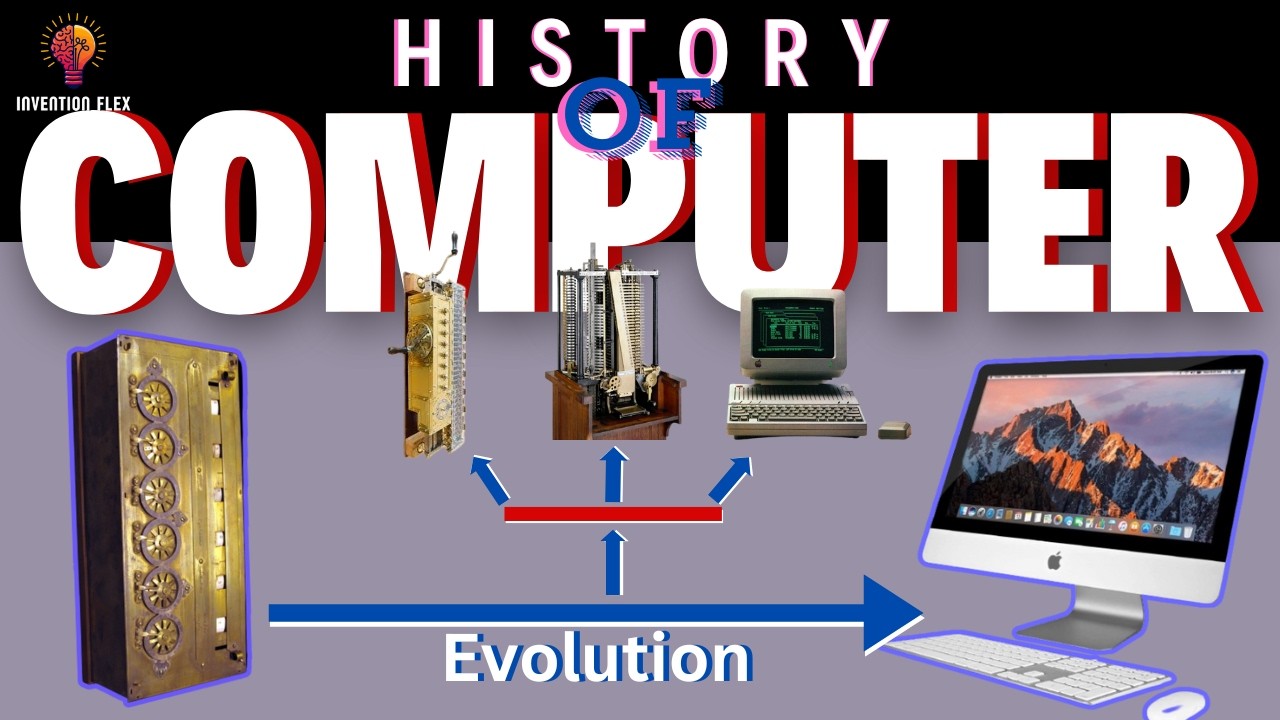History of Computers part 6 BBC Documentary.mp4
Summary
TLDRThis script explores the evolution of books and computers from exclusive to accessible mediums. It discusses the early days of manuscript preservation, the introduction of the printing press, and the development of chained libraries. The narrative then shifts to the computer's transition from a complex tool used by a select few to a user-friendly device embraced by millions. Highlighting key innovations like Ivan Sutherland's Sketchpad and Doug Engelbart's mouse, it underscores the pivotal role of visionaries in shaping modern interactive computing.
Takeaways
- 📜 The art of writing in the Middle Ages was a pioneering medium that became foundational to civilization.
- 📚 For centuries, access to written materials was limited, with illuminated manuscripts being extremely valuable and scarce.
- 🔐 Books were kept in high-security chests, requiring multiple keys to access, reflecting their preciousness.
- 📖 After the introduction of printing, books remained large and expensive, making them inaccessible to the wider public.
- 🔗 The concept of a 'chained library' allowed for the first time instant, albeit restricted, access to books for the public.
- 📚 Books eventually became smaller, more affordable, and widely available, transforming into a cornerstone of modern culture.
- 💻 Early computers were expensive and used primarily by a 'mathematical priesthood', with limited popular appeal.
- 👨💻 Ivan Sutherland's Sketchpad program pioneered computer graphics and interactive computing, allowing users to communicate with computers in new ways.
- 🖱️ Doug Engelbart introduced innovations like the mouse, which revolutionized how humans interact with computers.
- 🏢 Xerox PARC was established to make computers more user-friendly, aiming to bring computing to the masses.
- 🧠 The Xerox PARC team recognized the need to understand human mentality to make computers accessible to everyone, not just experts.
Q & A
What was the significance of illuminated manuscripts in the Middle Ages?
-Illuminated manuscripts were priceless and represented the exclusive access to written knowledge during the Middle Ages, confined to a select few.
How were books secured at Hereford Cathedral before the advent of printing?
-Books were kept in high-security chests that required three separate keys from canons to be opened.
What was the concept of a chained library?
-A chained library was a system where books were made accessible to the public by being chained, allowing them to be read on-site but not removed.
How did the introduction of printing impact the accessibility of books?
-Printing made books more available to the wider public by reducing their cost and size, making them more affordable and accessible.
What was the initial challenge faced by computers in becoming a popular tool?
-The initial challenge was that computers were expensive and difficult to use, requiring specialized knowledge and programming skills.
What was the significance of Ivan Sutherland's work on Sketchpad?
-Ivan Sutherland's work on Sketchpad pioneered the field of computer graphics and introduced interactive computing, allowing users to communicate with computers in a more intuitive graphical way.
Who is considered the most important person in the history of computing according to the script?
-According to the script, Doug Engelbart is considered the single most important person in the history of computing.
What was the purpose of Xerox PARC and what did they aim to achieve?
-Xerox PARC was established to make computers easier to use and to bring computing to everyone, aiming to humanize computers and make them common objects usable by anyone.
What was the role of Doug Engelbart in the development of computer technology?
-Doug Engelbart demonstrated a series of innovations, including the mouse, and advocated for a change in the way people thought about computers, emphasizing their potential as tools for ordinary people.
Why did Xerox set up a research center in Palo Alto, California?
-Xerox set up a research center to be part of the new electronic world and to explore paperless communication, as they recognized the potential obsolescence of paper.
What was the challenge faced by the scientists at Xerox PARC in making computers more user-friendly?
-The challenge was to understand the problems of ordinary users and to design interfaces that were intuitive and accessible, despite the scientists' own technical expertise.
Outlines

此内容仅限付费用户访问。 请升级后访问。
立即升级Mindmap

此内容仅限付费用户访问。 请升级后访问。
立即升级Keywords

此内容仅限付费用户访问。 请升级后访问。
立即升级Highlights

此内容仅限付费用户访问。 请升级后访问。
立即升级Transcripts

此内容仅限付费用户访问。 请升级后访问。
立即升级浏览更多相关视频

TECHNOLOGY BASED ARTS - ARTS 10 SECOND QUARTER

كورس أساسيات الكمبيوتر | الحلقة الأولى | نشأة الكمبيوتر | تاريخ الكمبيوتر

Steve Jobs: The Objects Of Our Life (1983)

History Of Computer | Full History And Evolution Of Computers Till Date

Generations of Computer |1ST -- 5TH Generation Computers | with Quiz

The History of Human Computer Interaction
5.0 / 5 (0 votes)
